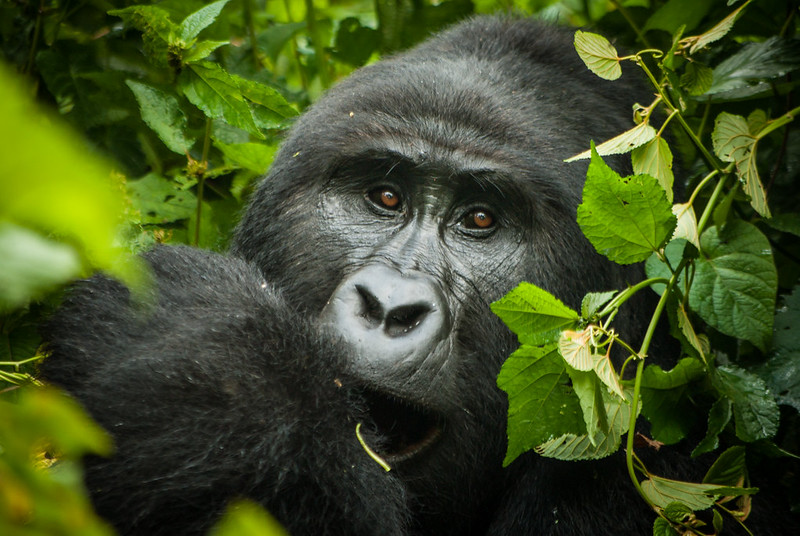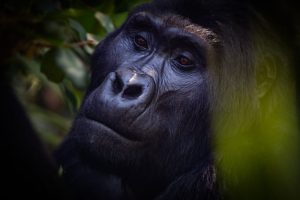Bwindi Impenetrable Forest National Park: A Majestic Haven for Gorillas and Biodiversity
Nestled in the southwestern corner of Uganda, Bwindi Impenetrable Forest National Park stands as a verdant jewel, shrouded in the mystique of its dense, lush vegetation. Home to nearly half of the world’s remaining mountain gorilla population, Bwindi is a sanctuary of biodiversity, offering an unparalleled opportunity for intimate encounters with these majestic primates. In this detailed exploration, we delve into the various facets that make Bwindi a must-visit destination, from its unique gorilla trekking experiences to its rich flora, avian diversity, and cultural significance.
1. Location and Geography:
Situated along the edge of the Rift Valley, Bwindi Impenetrable Forest National Park boasts a strategic location that straddles the borders of Uganda, the Democratic Republic of Congo, and Rwanda. The park’s terrain is characterized by steep hills and valleys, and its name aptly describes the thick vegetation that makes traversing the forest a challenging yet rewarding experience.
2. Biodiversity and Mountain Gorillas:
At the heart of Bwindi’s allure is its exceptional biodiversity. The park is a sanctuary for the endangered mountain gorillas, providing a habitat for these remarkable creatures to thrive. Gorilla trekking experiences, guided by expert trackers and guides, offer visitors the chance to observe and photograph these gentle giants in their natural environment. With several habituated gorilla families, each trek is a unique and unforgettable adventure.
3. Avian Diversity:
Bwindi Impenetrable Forest is not only a haven for primates but also a designated Important Bird Area. Over 350 bird species call the park home, including rare and endemic species such as the African green broadbill and Shelley’s crimson wing. Birdwatchers and nature enthusiasts can revel in the melodious symphony of the forest and spot a diverse array of feathered inhabitants.
4. Cultural Significance and the Batwa People:
Beyond its natural wonders, Bwindi is intertwined with cultural significance. The Batwa people, indigenous to the region, have lived in harmony with the forest for generations. Some tour operators offer cultural experiences that allow visitors to engage with the Batwa, learning about their traditional knowledge, customs, and the delicate balance between human communities and the forest.
5. Conservation Efforts and UNESCO Recognition:
In acknowledgment of its outstanding value, Bwindi Impenetrable Forest was designated a UNESCO World Heritage Site in 1994. The park’s conservation efforts focus on mitigating challenges such as habitat fragmentation, poaching, and human-wildlife conflict. Ongoing initiatives seek to ensure the long-term survival of Bwindi’s ecosystems and the species that call it home.
6. Accommodations and Sustainable Tourism:
The surrounding area offers a range of accommodations, from luxury lodges to eco-friendly camps. Many of these establishments are committed to sustainable tourism practices, contributing to conservation efforts and supporting local communities. Visitors can experience the beauty of Bwindi while leaving a positive impact on the environment and the people who call this region home.
7. Accessibility and Journey to Bwindi:
Accessing Bwindi involves traversing scenic landscapes, varying altitudes, and picturesque views. The journey to the park is an integral part of the experience, setting the stage for the awe-inspiring encounters that await within the impenetrable forest.
8. Gorilla Conservation and Research:
Bwindi Impenetrable Forest National Park is not just a sanctuary for mountain gorillas but also a hub for critical conservation and research efforts. Ongoing studies within the park contribute to our understanding of gorilla behavior, health, and genetics. Researchers and conservationists collaborate to ensure the long-term survival of these endangered primates, and visitors have the opportunity to learn about and support these crucial initiatives.
9. Flora and Fauna Diversity:
The park’s diverse flora extends beyond the towering trees that form its canopy. Bwindi is home to numerous plant species, many of which are endemic to the Albertine Rift region. The forest harbors a variety of mammals, including several primate species such as colobus monkeys and baboons. Exploring the trails of Bwindi unveils a rich tapestry of biodiversity.
10. Alternative Activities:
While gorilla trekking is the highlight of many visits, Bwindi offers alternative activities for those seeking a more comprehensive experience. Guided nature walks, where visitors can learn about the medicinal properties of plants, birdwatching excursions, and waterfall hikes provide additional avenues for exploration.
11. Weather and Best Times to Visit:
Bwindi experiences a tropical climate, and the weather can vary depending on the region’s altitude. The best times to visit are during the dry seasons from June to August and December to February when trekking conditions are more favorable. However, the park’s lush greenery is most vibrant during the wetter months.
12. Community and Ecotourism Initiatives:
Bwindi’s proximity to local communities highlights the importance of community involvement in conservation. Many lodges and tour operators, including Njia African Adventures, actively engage in ecotourism initiatives that benefit nearby communities. These may include community-based tourism projects, educational programs, and initiatives aimed at empowering local residents.
13. Photography Opportunities:
Bwindi’s ethereal landscapes, coupled with the captivating presence of mountain gorillas, make it a paradise for photographers. Whether capturing the intricate details of the forest flora, the expressions of gorillas in their natural habitat, or the play of light filtering through the canopy, every moment in Bwindi presents a unique and captivating photo opportunity.
14. Future Challenges and Conservation Outlook:
While Bwindi Impenetrable Forest National Park has achieved significant success in gorilla conservation, challenges persist. Addressing issues such as habitat protection, climate change, and community development remains crucial for the park’s long-term viability. Continued collaboration between government agencies, NGOs, and the local communities is essential for securing Bwindi’s future.
15. Njia African Adventures’ Sustainable Practices:
When choosing Njia African Adventures for a journey into Bwindi, travelers align themselves with a company committed to sustainable tourism. Njia actively supports conservation efforts, engages with local communities in responsible ways, and promotes eco-friendly practices. Travelers can have confidence that their adventure with Njia contributes positively to both the natural environment and the well-being of local communities.
A sojourn into Bwindi Impenetrable Forest National Park with Njia African Adventures. Promises not only an encounter with mountain gorillas. But also a holistic exploration of biodiversity, culture, and sustainable tourism. This enchanted forest invites visitors to become stewards of its delicate ecosystems, fostering a deep appreciation for the interconnectedness of all life within the impenetrable embrace of Bwindi.
Bwindi Impenetrable Forest National Park beckons adventurers, conservationists, and nature lovers with its unique blend of biodiversity, cultural heritage, and the rare privilege of encountering mountain gorillas in their natural habitat. As a testament to Uganda’s commitment to conservation, Bwindi stands as a model for sustainable tourism, offering a glimpse into the delicate harmony between humanity and the natural world. A journey with Njia African Adventures through this enchanted forest promises an immersive and transformative experience, leaving an indelible mark on the hearts of those who venture into its depths.


